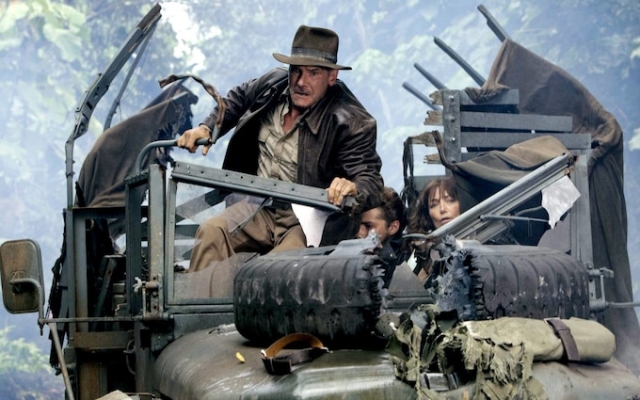 Harrison Ford, Shia LaBeouf and Karen Allen in Indiana Jones and the Kingdom of the Crystal Skull. , Officer Brent Hopkins of the Los Angeles Police Department Burglary Unit, thought «an unusual burglar.» Smartly dressed and carrying a shoulder bag, Hopkins couldn't see Davis when the LAPD picked him up after he was found loitering around NBC Universal's Los Angeles office in 2013. «Who knows if he wants to be a producer on the cheap or has a weird fascination with the movie business,» Hopkins said.
Harrison Ford, Shia LaBeouf and Karen Allen in Indiana Jones and the Kingdom of the Crystal Skull. , Officer Brent Hopkins of the Los Angeles Police Department Burglary Unit, thought «an unusual burglar.» Smartly dressed and carrying a shoulder bag, Hopkins couldn't see Davis when the LAPD picked him up after he was found loitering around NBC Universal's Los Angeles office in 2013. «Who knows if he wants to be a producer on the cheap or has a weird fascination with the movie business,» Hopkins said.
This was not the first time that Davis was prosecuted. Six years before his arrest in 2013, in a Los Angeles hotel room, Davis met with several potential buyers for some of the images he got hold of, hoping they might be interested in what he was selling. Then he was arrested.
They were officers from the Los Angeles County Sheriff's Department, and they informed him that he was arrested on suspicion of being involved in the theft of «film production budget and evidence» from an office in the Universal Studios complex.
They set up a sting operation after detectives learned that the photos were being offered on gossip websites and any other interested parties. They claimed that Davis was trying to sell stolen images that provided plot clues to the yet-to-be-released film Indiana Jones and the Kingdom of the Crystal Skull. “We staged a scam, and the guy was arrested. It was really cool,” producer Frank Marshall told Empire at the time. «People were actually saying, 'No, we will respect Steven [Spielberg's] vision'.»
Such was the feverish anticipation of Indiana Jones' fourth outing. In the 19 years since Harrison Ford, now 80, and Sean Connery drove off into the sunset before the Nazis got their hands on the Holy Grail, attempts to bring Indy back to the screen have come and gone. The last frame of the third movie was very accurate.
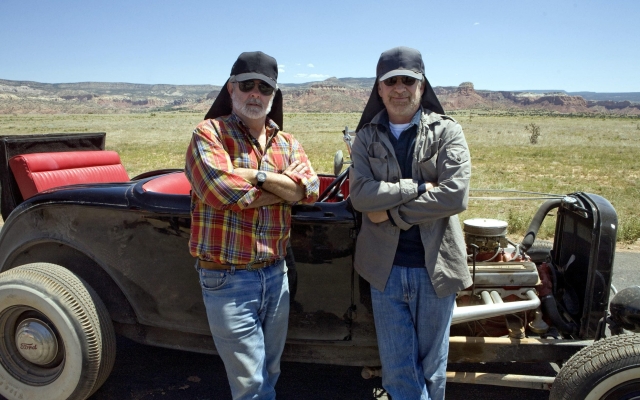 George Lucas and Steven Spielberg on the set of Indiana Jones and the Kingdom of the Crystal Skull. Photo: Alamy
George Lucas and Steven Spielberg on the set of Indiana Jones and the Kingdom of the Crystal Skull. Photo: Alamy
«I thought it brought the curtain down on the trilogy and then we were all going to move on and grow up in other aspects of filmmaking and I never thought I'd see Indiana Jones again,» Spielberg said during promotional rounds for The Crystal Skull. . However, Spielberg, George Lucas and Ford discussed from time to time in the early nineties what to do with Indy next, and always found themselves at odds. «A script came along from time to time and it wasn't quite what we were hoping for for one or the other of us,» Ford told Empire. «It took us all a long time to come to a consensus.»
Spielberg was especially careful. «I resisted,» Spielberg later said. «I was the one who said, 'I'm done with this series, it was great, let's go.' As for the long-awaited fifth installment of Indiana Jones and the Dial of Destiny, which will premiere in Cannes on May 18th. released June 30, starring a partially aged Harrison Ford, Spielberg handed over the reins to Logan director James Mangold. It can only upgrade the Crystal Skull.
It was Lucas' idea to take the action into the Cold War, paying homage not to action-adventure films of the thirties, but to sci-fi B-movies of the fifties. Spielberg didn't budge. «I said, 'George, I don't want to shoot aliens.' I have already starred in two films about aliens. I was working on Aliens and Close Encounters of the Third Kind at the time. I didn't want to do more aliens. Here it is. But George insisted.
The first draft was titled «Indiana Jones and the Skewers»; it later became «Indiana Jones and the Attack of the Giant Ants» and «Indiana Jones and the Mysterians». Even then, Spielberg thought he was «poking fun» at Lucas' favorite project, and vaguely expected to pass it on to a younger director if he ever went anywhere. When Roland Emmerich's Independence Day was a huge hit about aliens, Spielberg assumed it was. He reasoned that they couldn't make another movie about a massive alien invasion right now.
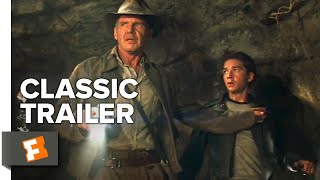
But Lucas did not give up and eventually found a compromise. These aliens weren't aliens at all—they were interdimensional beings, he told Spielberg, and proceeded to explain string theory. Out of a sense of duty to his old friend, Spielberg relented. “Good: they are interdimensional beings,” he said. “They are not extraterrestrial, they are interdimensional. OK OK. How will they look? George said, “Well, like aliens. But we'll call them interdimensional.»
Ford returned as Indiana Jones at the age of 64, trying to stop the Russians from getting their hands on the crystal skull so they could telepathically control the world's population. Every precaution has been taken to prevent leaks. When asked to play Mac, Indy's old military buddy, Ray Winstone insisted on seeing the script. Ultimately, the production allowed them to do so, but only by sending one of the employees from America with a single hard copy to his home.
Winston then had a couple of hours to read the script once while the courier sat in the room. Once Winstone was finished, the courier left with the script and headed straight for the airport.
Despite Spielberg's concerns, filming went smoothly. But there was one thing that production couldn't control. The pre-release of The Crystal Skull was one of the first examples of fans trading bits and pieces of information and homegrown theories about the film's plot online long before it actually happened. Due to a lack of details on what the Crystal Skull would actually entail, the film's additional Lego sets released long before the film itself became oracles of what fans could expect.
Every tiny piece of plastic has been carefully examined and discussed in detail, although the River Chase and Jungle Slash sets have shown nothing more than that the snakes will appear in their normal form, and that they will be assisted by giant ants.
The third set, based on the Mayan temple climax, proved to be more useful. Despite attempts to keep everything a secret, fans realized early on that the minifigures, which looked like translucent skeletons, were aliens, and the traitorous Lego frown on Cate Blanchett's figure meant she would turn out to be a villainess. Spielberg was upset by the early revelations, but Lucas was more philosophical.
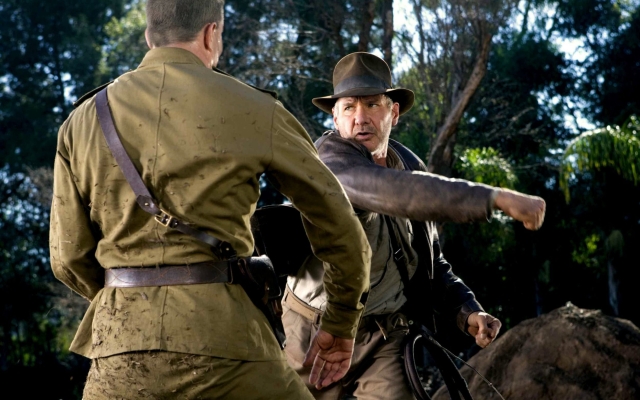 Harrison Ford as an archaeologist and adventurer. Photo: Allstar
Harrison Ford as an archaeologist and adventurer. Photo: Allstar
«Stephen will say, 'Oh, the Internet has everything — what is it and what is it,'» he later said. «And to that I say, 'Stephen, it doesn't matter!' Look, Jaws was a novel before it was a movie, and anyone could see how it ended. It didn't matter.”
However, the leaks continued. Actor Tyler Nelson was cast as a Russian soldier who celebrated Jones's capture by dancing to balalaika music and was apparently so excited that he gave an interview to The Edmond Sun, his hometown newspaper in Oklahoma. “Obviously, the Soviet army was looking for the skull in the jungles of South America, and Indiana Jones was looking too,” Nelson said.
Tyler then blabbed that the Russians would blackmail Jones by threatening to kill Marion, the mother of his son Matt, and that Blanchett, who had remained completely silent about what her involvement would entail, was playing an evil Russian operative. “I saw Harrison Ford being interrogated tied to a chair,” he added cheerfully. The production team was vague about this, and a Supreme Court ruling that charged him with violating a confidentiality agreement was settled out of court. Nelson's balalaika dance was reportedly cut from the finished film.
Though some reviews were lukewarm, The Crystal Skull set a new bar for Indiana Jones at the box office, grossing $790 million worldwide. But the moment that popped out of The Crystal Skull was a moment that had been in Spielberg's head ever since he became an executive producer on Back to the Future.
In Bob Gale and Robert Zemeckis' original script ending, Marty McFly and Doc Brown sent Marty back to 1985, not by striking the Hill Valley clock tower with lightning, but by driving a DeLorean straight into and driving a nuclear bomb. house explosion.
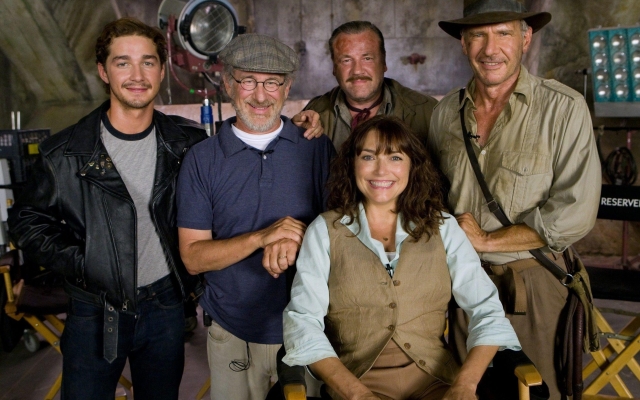 (left to right): Shia LaBeouf, Steven Spielberg, Ray Winstone, Karen Allen and Harrison Ford. Image Credit & Copyright: Alamy
(left to right): Shia LaBeouf, Steven Spielberg, Ray Winstone, Karen Allen and Harrison Ford. Image Credit & Copyright: Alamy
The action sequence was to involve the construction and then destruction of a «nuclear city» — a collection of buildings in different styles and materials populated by mannequins that was used to measure the damage a bomb could do to a typical American city — and was dropped when the extra $1 million had to be crossed out of the budget.
This has been reworked into the Crystal Skull, and much remains exactly the same: a bomb falling from a metal tower; running around a perfect model of a flapper house full of mannequins; a montage of plastic people melting terribly as the bomb's fireball engulfs the city. The payoff, however, was that Jones would survive a nuclear bomb with a yield of several megatons and a temperature warmer than the surface of the Sun by climbing into an empty lead-lined refrigerator.
When the movie was released, critics and fans were quick to point out that even if Indy had managed to avoid being vaporized by the blast, he would probably have struggled not to turn into mush when the refrigerator was thrown hundreds of meters away. explosion sites.
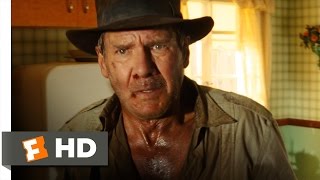
The phrase «blow up the fridge» soon replaced «jump the shark» as a way of describing something that collapses under the weight of its own ridiculousness . “I'm proud of it,” Spielberg said. «I'm glad I was able to bring it into popular culture.»
Spielberg tried to shield Lucas from blame for the scene, but Lucas told the New York Times that it was the other way around; Spielberg wasn't sure, but Lucas liked it so much that he put together a six-inch-thick dossier confirming that Indy would not have been charred or powdered. «The chances of surviving in this refrigerator — according to many scientists — are about 50 to 50,» Lucas insisted.
After a protracted birth, the Crystal Skull also had protracted consequences. Spielberg admitted that he was not happy with how it turned out. There was a «big argument» between the two friends about the crystal skulls and their powers., he later said. «I didn't want these beings to be aliens or interdimensional beings,» he said. “But I am loyal to my best friend. When he writes a story he believes in—even if I don't believe in it—I will make the film the way George intended it to be.”
The crystal skulls were still standing. causes a headache after the release of the film. Some consider them to be ancient artifacts created by Mayan communities, although recent research has shown them to be 20th-century forgeries. One scholar from Belize disagreed with their participation in the film.
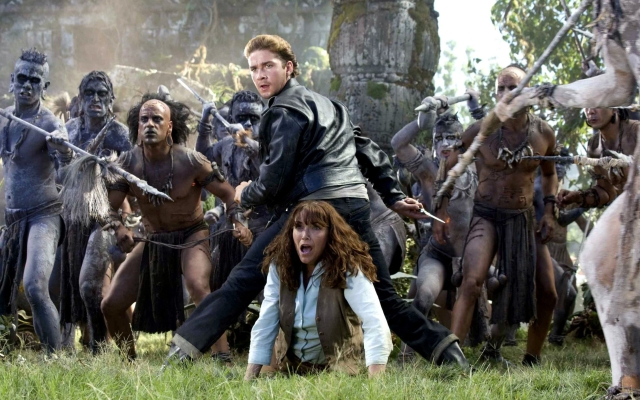 Shia LaBeouf and Karen Allen as Mutt Williams and Marion Ravenwood. Photo: Allstar
Shia LaBeouf and Karen Allen as Mutt Williams and Marion Ravenwood. Photo: Allstar
In 2012, Dr. Jaime Ave, an expert on Mayan culture and archeology who has taught at universities in Canada and the United States, filed a lawsuit against LucasFilm, Disney and Paramount Pictures, alleging that Hollywood was exploiting Belizean culture for «illegal profit». He thought that the Crystal Skull's crystal skulls were modeled after a skull «found» in Belize in 1924 by the English adventurer F. A. Mitchell-Hedges. “The skull of Hedges or its likeness in the film,” the lawsuit says. “Due to their success in theaters, LucasFilm and Paramount continue to profit from the film's continued distribution on home media and online video sources. To date, Belize has not participated in any profits generated from the sale of the Film or the rights to it.» Ultimately, the claim was dismissed.
Even if he was unhappy, Spielberg expected his cast to stay in the loop. Shia LaBeouf, who played Matt, Indy's greaser son, did just the opposite in an LA Times interview at Cannes in 2010. “We [Harrison Ford and LaBeouf] had serious discussions. He wasn't happy about it either. Look, the movie could be updated. There was a reason why it was not accepted by everyone.”
He was especially critical of the sequence in which Mutt was swinging on vines through a jungle canopy with dozens of monkeys. “I think he [Spielberg] is a genius and he gave me my whole life. He's done so much great work that he doesn't need to feel vulnerable over one film. But when you throw the ball, you throw the ball.»
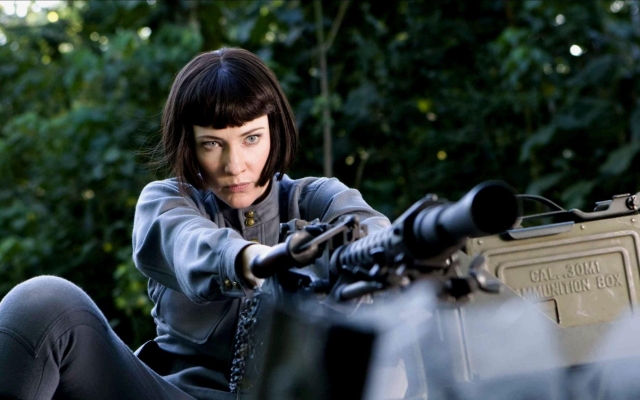 Cate Blanchett as Irina Spalko, a villainous Soviet agent. Alami
Cate Blanchett as Irina Spalko, a villainous Soviet agent. Alami
LaBeouf's reluctance to defend the film annoyed Spielberg. “He told me there was a time to be human and have an opinion, and there was a time to sell cars,” LaBeouf later said. «It gave me freedom, but it also killed my spirit because this was the dude I looked up to as my sensei.» The director he found was «not so much a director as a fucking company,» LaBeouf said.
Ford sided with Spielberg and told LaBeouf about it. «I think he was a fucking idiot,» Ford told Details in 2011. “As an actor, I consider it my duty to support the film without making a complete ass of myself.”
LaBeouf did not repent. «I remember him [Spielberg] telling me, 'Tom Cruise never picks his nose in public,'» LaBoeuf told Interview. «And all I thought about was that I don't want to be Tom Cruise.»
Ford stubbornly refused to pick his nose at The Crystal Skull, though he did snort briefly when the film appeared on Vanity fair. the interview may have said more than he wanted to. “I really enjoyed each of the films and the different experiences I got from each,” he said diplomatically, “and the people I worked with.”







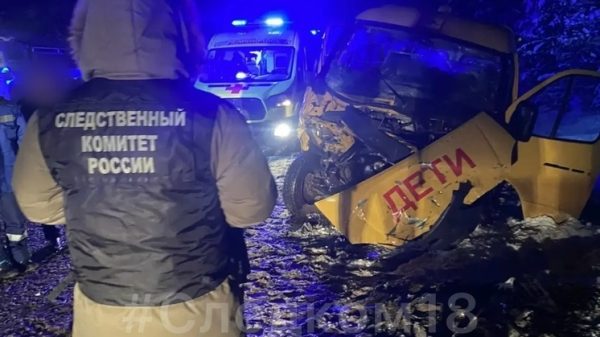
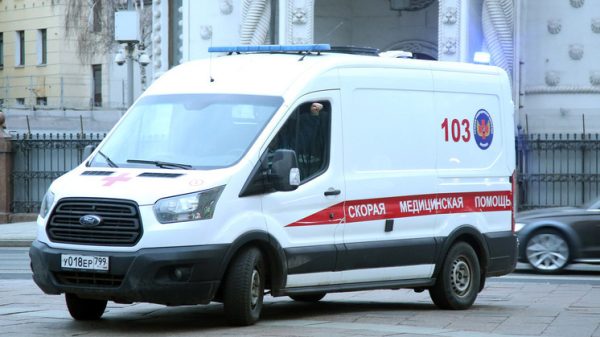
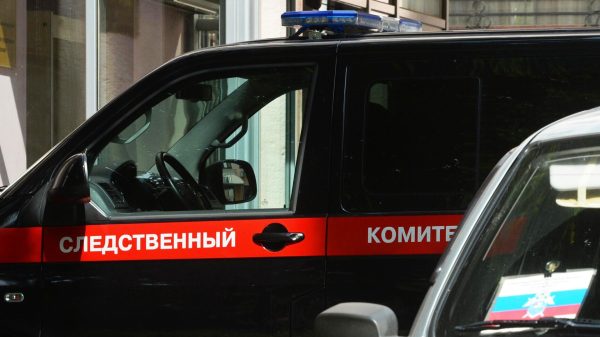
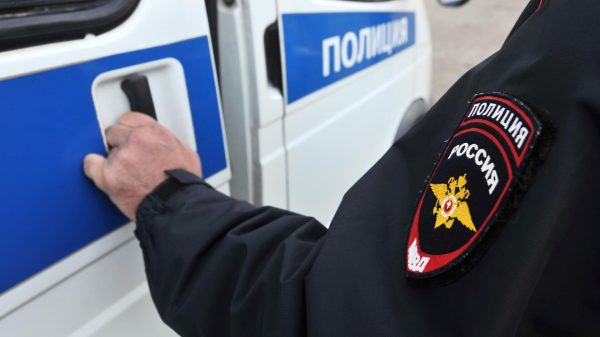


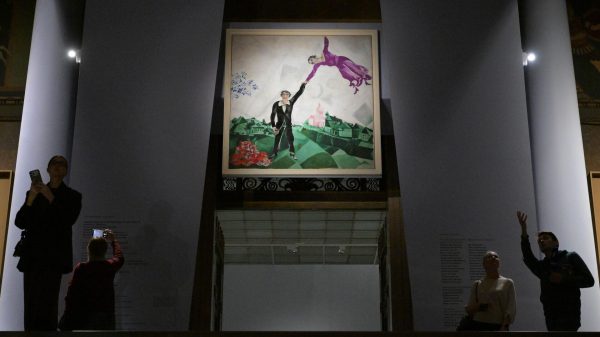



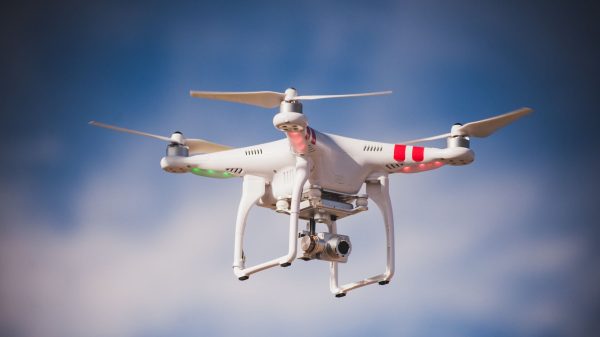
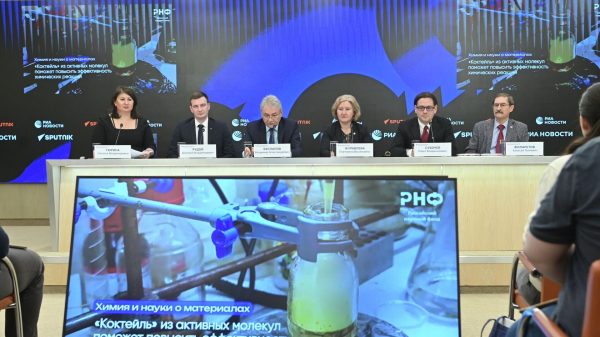














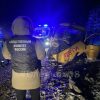


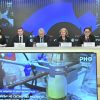











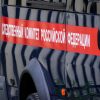

Свежие комментарии